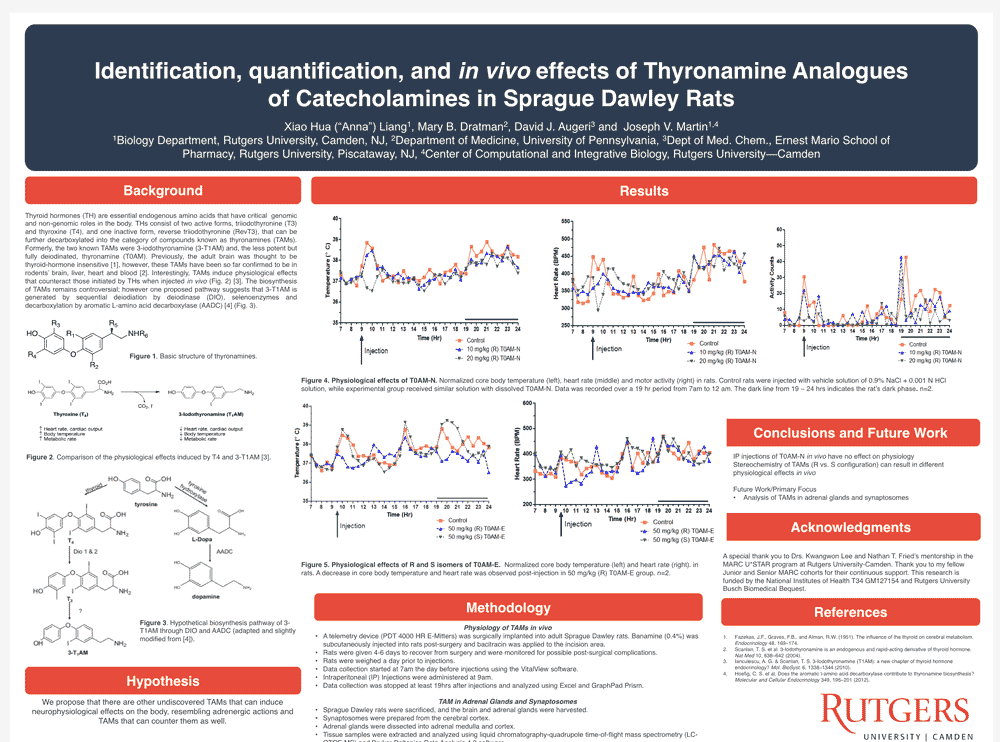Xiao Hua (Anna) Liang ‘21
Major: Biology
Minors: Chemistry and Leadership Studies
Affiliation: EOF
Faculty Mentor: Dr. Joseph Martin, Professor of Biology
Abstract
Thyroid hormones (THs) are essential endogenous amino acids that have critical roles in regulating the metabolism of adult mammals. Alterations in THs can cause the body to diverge from homeostasis, leading to disorders such as hyper- and hypo- thyroidism which result in multi-system consequences. THs are derived from tyrosine and they consist of two active forms, triiodothyronine (T3) and thyroxine (T4), and one inactive form, 3,3’,5-triiodothyronine (rT3). These compounds can be further decarboxylated and deiodinated into a class of metabolites known as thyronamines (TAMs). Currently, only two TAMs, 3-iodothyronamine (3T1AM) and thyronamine (T0AM), have been successfully isolated from the adult rodent brain and studied. These compounds are still relatively new and not much is known about their properties in the body. The biosynthesis pathway of TAMs remains unclear, however, previous work done by Dr. Mary B. Dratman has confirmed the localization of T3 in nerve terminals (synaptosomes). Since THs and catecholamines are derived from tyrosine and TAMs are derived from THs, it is thus reasonable to propose that TAMs may function in a manner similar to catecholamines. This may help explain some of the neurological symptoms associated with thyroid-related disorders. Preliminary studies done by the Martin lab have identified seven additional dopamine-analogue TAMs in the adrenal medulla and synaptosomes of Sprague Dawley rats using liquid chromatography-quantitative time-of-flight mass spectrometry (LC- QTOF-MS). Our study aims to: 1) identify epinephrine and norepinephrine analogue thyronamines in the adrenal glands and synaptosomes, and 2) to observe the physiological effects induced by different TAMs in Sprague Dawley rats to find a compound that can induce a hyperthyroid-like state. In addition to identifying the dopamine-analogue TAMs, T3 and T4, we were able to identify three new norepinephrine-like TAMs that were not previously known to be present: T2AM-N, T3AM-N and T4AM-N. The intraperitoneal (IP) injections of various TAMs into the animals suggested that certain TAMs can cause physiological changes in the body (body temperature, heart rate and activity) while other TAMs are without effect. We also noticed that the R and S configuration of the compounds caused different physiological effects.
Preview

